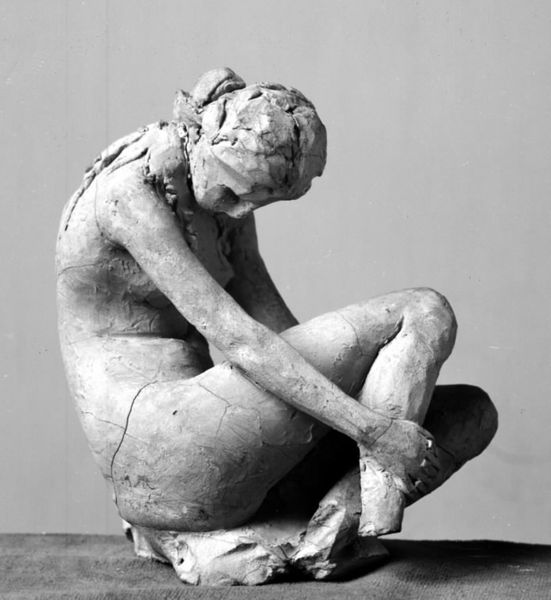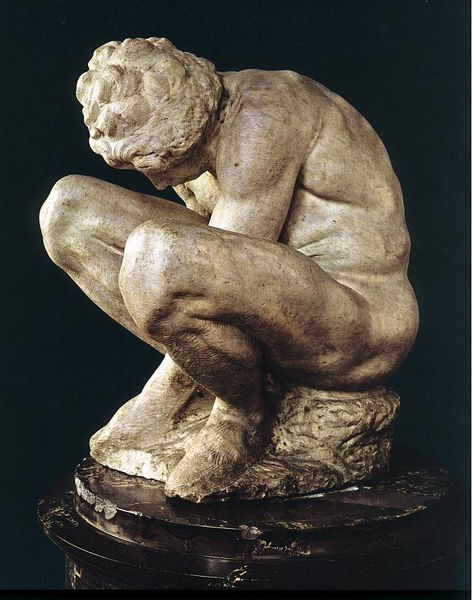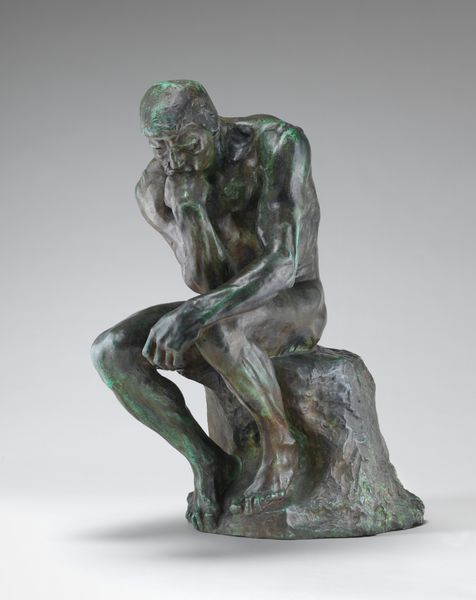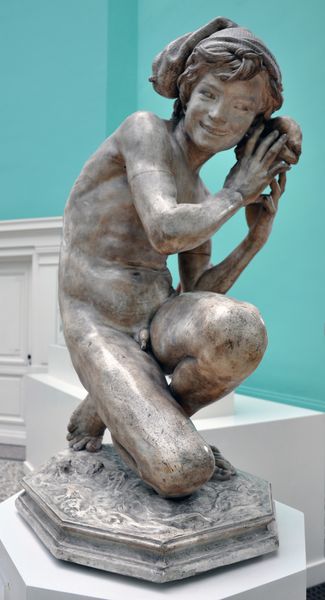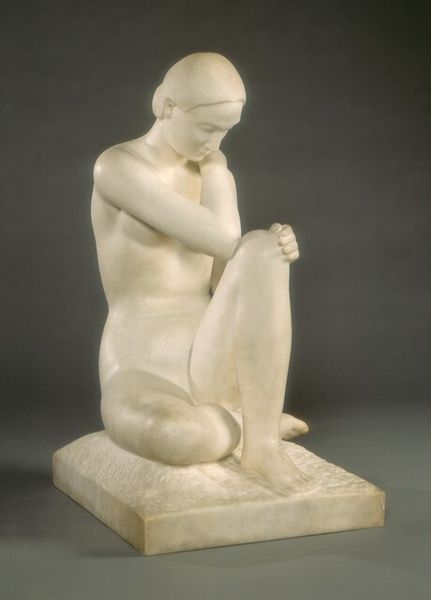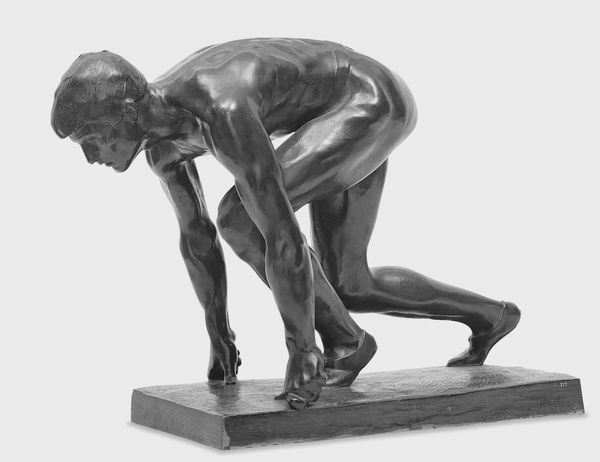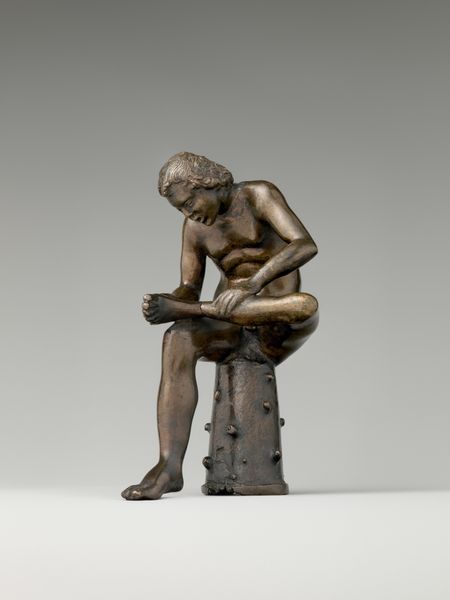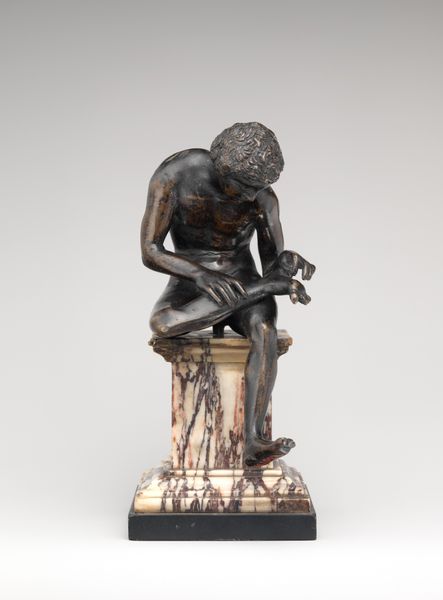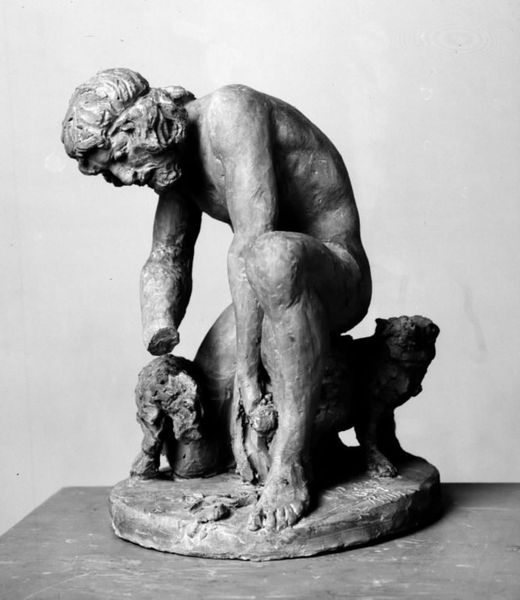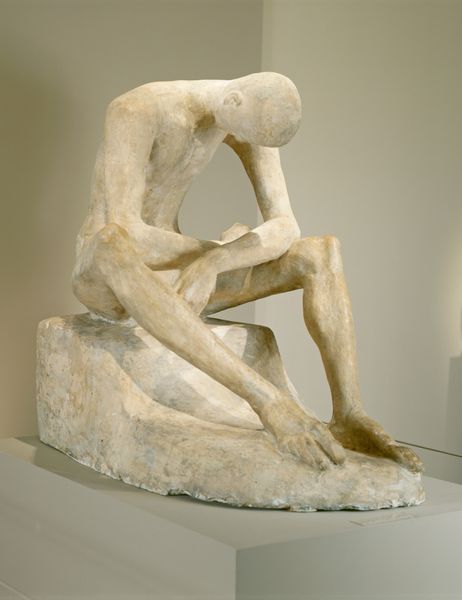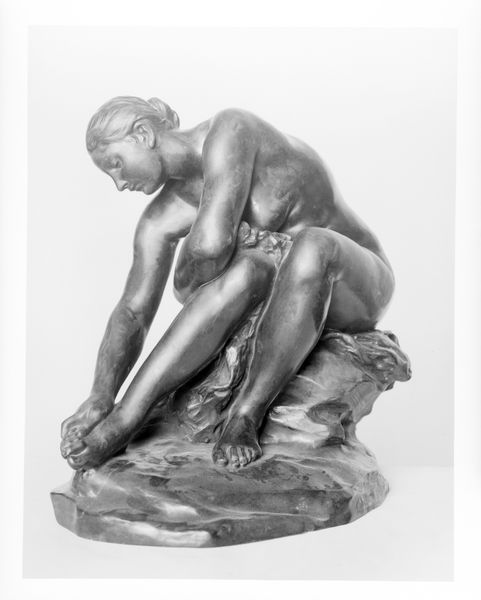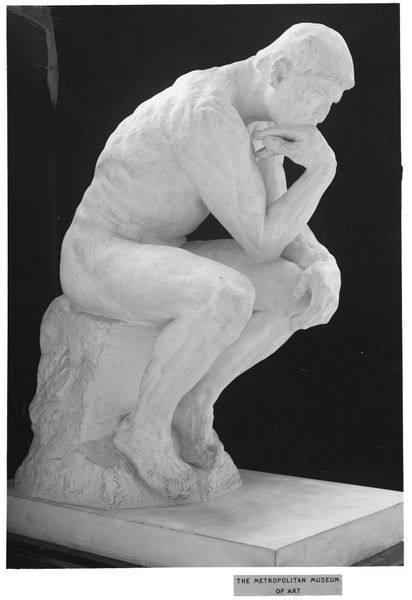
Dimensions: object: 440 x 330 x 600 mm, 49.4 kg
Copyright: © The Eduardo Paolozzi Foundation | CC-BY-NC-ND 4.0 DEED, Photo: Tate
Editor: This bronze sculpture, "Newton" by Eduardo Paolozzi, depicts a figure intensely focused on what appears to be architectural blocks. The artist’s hand looks almost machine-like in its precision. What’s your perspective on this piece? Curator: Paolozzi's choice of bronze highlights the industrial processes involved in its creation. Consider the labor needed to cast and assemble such a work. It challenges our romantic notions of artistic creation, doesn't it? This piece compels us to ask: who shapes our understanding of the world, and through what means? Editor: So, the emphasis is less on the figure of Newton himself and more on the physical creation of the sculpture? Curator: Precisely. The materiality and the making are inseparable from its meaning. That’s something to ponder.
Comments
Join the conversation
Join millions of artists and users on Artera today and experience the ultimate creative platform.
tate 7 months ago
⋮
This symbolic figure of the seventeenth century scientist Sir Isaac Newton is a remarkable tribute from one artist to another. Paolozzi's sculpture is a version of Blake's Colour Print, Newton, which is displayed nearby. Paolozzi has often explored in his sculpture the relation between the mechanical and the imaginative, and has invented new images linking robots to works of art. In his first Newton, a small relief sculpture, Newton's body looked partly bolted together, as if the scientist who discovered the laws of nature were himself a machine. For the forecourt of the new British Library, Paolozzi designed a huge, free-standing Newton. The bronze shown here was cast from the model made to show the Library committee. Gallery label, August 2004
